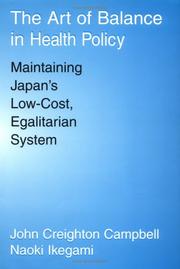| Listing 1 - 10 of 14 | << page >> |
Sort by
|
Book
Year: 1998 Publisher: Cambridge, Mass. National Bureau of Economic Research
Abstract | Keywords | Export | Availability | Bookmark
 Loading...
Loading...Choose an application
- Reference Manager
- EndNote
- RefWorks (Direct export to RefWorks)
Book
Year: 1998 Publisher: Cambridge, Mass. National Bureau of Economic Research
Abstract | Keywords | Export | Availability | Bookmark
 Loading...
Loading...Choose an application
- Reference Manager
- EndNote
- RefWorks (Direct export to RefWorks)
Book
Year: 1998 Publisher: Cambridge, Mass. National Bureau of Economic Research
Abstract | Keywords | Export | Availability | Bookmark
 Loading...
Loading...Choose an application
- Reference Manager
- EndNote
- RefWorks (Direct export to RefWorks)
Digital
Year: 1998 Publisher: Cambridge, Mass. National Bureau of Economic Research
Abstract | Keywords | Export | Availability | Bookmark
 Loading...
Loading...Choose an application
- Reference Manager
- EndNote
- RefWorks (Direct export to RefWorks)
Money market. Capital market --- Business cycles --- United States of America
Book
Year: 1998 Publisher: Chicago : University of Chicago Press,
Abstract | Keywords | Export | Availability | Bookmark
 Loading...
Loading...Choose an application
- Reference Manager
- EndNote
- RefWorks (Direct export to RefWorks)
Economic growth, low inflation, and financial stability are among the most important goals of policy makers, and central banks such as the Federal Reserve are key institutions for achieving these goals. In Asset Prices and Monetary Policy, leading scholars and practitioners probe the interaction of central banks, asset markets, and the general economy to forge a new understanding of the challenges facing policy makers as they manage an increasingly complex economic system. The contributors examine how central bankers determine their policy prescriptions with reference to the fluctuating housing.
Book
ISBN: 1840032316 Year: 1998 Publisher: Bury Saint Edmund's Mayhew
Abstract | Keywords | Export | Availability | Bookmark
 Loading...
Loading...Choose an application
- Reference Manager
- EndNote
- RefWorks (Direct export to RefWorks)
Book
Year: 1998 Publisher: Chicago : University of Chicago Press,
Abstract | Keywords | Export | Availability | Bookmark
 Loading...
Loading...Choose an application
- Reference Manager
- EndNote
- RefWorks (Direct export to RefWorks)
Economic growth, low inflation, and financial stability are among the most important goals of policy makers, and central banks such as the Federal Reserve are key institutions for achieving these goals. In Asset Prices and Monetary Policy, leading scholars and practitioners probe the interaction of central banks, asset markets, and the general economy to forge a new understanding of the challenges facing policy makers as they manage an increasingly complex economic system. The contributors examine how central bankers determine their policy prescriptions with reference to the fluctuating housing.
Book
Year: 1998 Publisher: Chicago : University of Chicago Press,
Abstract | Keywords | Export | Availability | Bookmark
 Loading...
Loading...Choose an application
- Reference Manager
- EndNote
- RefWorks (Direct export to RefWorks)
Economic growth, low inflation, and financial stability are among the most important goals of policy makers, and central banks such as the Federal Reserve are key institutions for achieving these goals. In Asset Prices and Monetary Policy, leading scholars and practitioners probe the interaction of central banks, asset markets, and the general economy to forge a new understanding of the challenges facing policy makers as they manage an increasingly complex economic system. The contributors examine how central bankers determine their policy prescriptions with reference to the fluctuating housing.

ISBN: 0521571227 0521065054 0511984049 Year: 1998 Publisher: Cambridge Cambridge University press
Abstract | Keywords | Export | Availability | Bookmark
 Loading...
Loading...Choose an application
- Reference Manager
- EndNote
- RefWorks (Direct export to RefWorks)
Compared to the rest of the world, Japan has a healthy population but pays relatively little for medical care. This book analyses how the health care works, and how it came into being. Taking a comparative perspective, the authors describe the politics of health care, the variety of providers, the universal health insurance system, and how the fee-schedule constrains costs at both the macro and micro levels. Special attention is paid to issues of quality and to the difficult problems of assuring adequate high-tech medicine and long-term care. Although the authors discuss the drawbacks to Japan's stringent cost-containment policy, they also keep in mind the possible implications for reform in the United States. Egalitarian values and a concern for 'balance' among constituents, the authors argue, are essential for cost containment as well as for access to health care.
Medical care --- J4217 --- J4575 --- J7910 --- Delivery of health care --- Delivery of medical care --- Health care --- Health care delivery --- Health services --- Healthcare --- Medical and health care industry --- Medical services --- Personal health services --- Public health --- Cost control --- Finance --- Japan: Sociology and anthropology -- social policy and pathology -- sanitation and public health --- Japan: Economy and industry -- finance -- insurance --- Japan: Science and technology -- medical science -- public health and general hygiene --- Social Sciences --- Political Science --- Finance. --- Cost control.
Book
ISBN: 9780511984044 9780521571227 9780521065054 Year: 1998 Publisher: Cambridge Cambridge University Press
Abstract | Keywords | Export | Availability | Bookmark
 Loading...
Loading...Choose an application
- Reference Manager
- EndNote
- RefWorks (Direct export to RefWorks)
| Listing 1 - 10 of 14 | << page >> |
Sort by
|

 Search
Search Feedback
Feedback About UniCat
About UniCat  Help
Help News
News